How to Cook Pizza in the Oven: Tips for Homemade Pizza!
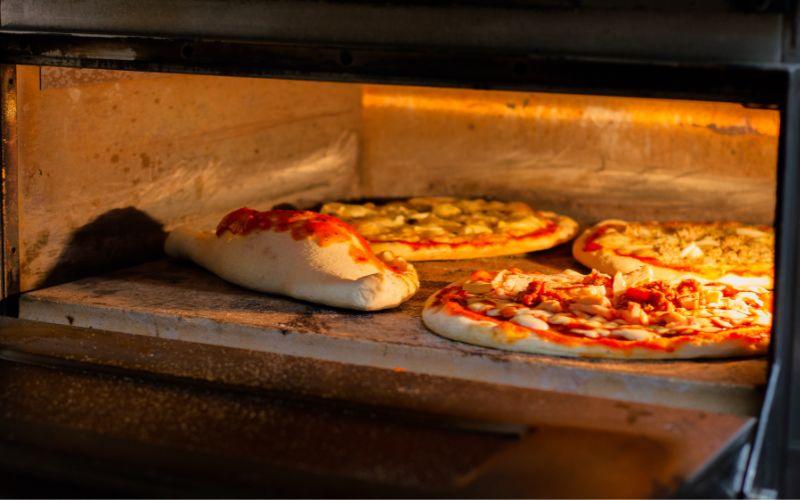
Are you still finding it difficult for you to make your perfect pizza? Don't be afraid of that. In this article, we'll help you by providing step-by-step cooking instructions, sauce and topping advice, pizza dough and baking tips, as well as a recommended pizza recipe. Overall, the keys to a perfect homemade pizza are high heat, proper preparation of ingredients, and vigilant cooking. Happy baking!

Step 1: Preparing Your Pizza Dough
- All-purpose flour is commonly used and yields a crispy crust.
- Bread flour can also work well.
- A blend of all-purpose and bread flour helps achieve a soft and chewy crust.
- Semolina can be added for extra texture and chewiness.
- High-gluten bread flour or sir lancelot flour helps achieve a crispy, bread-like crust.
- All-purpose can also work.
- Protein/gluten content affects stretchiness and chewiness
- Finely milled 00 pizza flour can yield a softer crust
- Whole-grain flour will create a denser, chewier crust
Creating the Dough Mixture
To create your dough, begin by combining 1-1/2 cups of warm water (around 110°F) with 2-1/4 teaspoons of active dry yeast or instant yeast and a teaspoon of sugar to activate the yeast. Allow this mixture to sit for about 10 minutes; you should see it become frothy, indicating that the yeast is active. Then mix in 3-1/2 cups of bread flour, 2 tablespoons of olive oil, and 2 teaspoons of salt. It’s important to add salt and oil after the yeast has fully activated since they can hinder yeast development.
Kneading the Dough
For kneading, transfer the dough onto a lightly floured surface and fold it onto itself. Knead it by pushing the dough downwards and forwards with the heels of your hands. Continue this process for about 5-7 minutes until the dough is smooth, elastic, and slightly tacky but not sticky. Add flour in small increments if the dough is excessively sticky.
Letting the Dough Rise
Once kneaded, place the dough in a lightly oiled bowl and turn it to coat all sides with oil. Cover the bowl with a damp cloth or plastic wrap, and let the dough rise in a warm area until it doubles in size, typically taking about 1 to 2 hours. The rise time can vary depending on the temperature and environment, so keep an eye on the dough and allow it to rise until it reaches the correct size rather than adhering strictly to the time.
Step 2: Assembling the Pizza
This stage is where you'll shape the pizza, add flavor with sauce, and personalize it with your choice of toppings.
Rolling Out Your Pizza Crust
To roll out your pizza crust, begin by dusting your working surface with a bit of flour to prevent sticking. Place the rested dough ball on the surface and start pressing it down from the center outwards, leaving a slight rim around the edge to form the crust. If the dough resists or shrinks back, let it rest for a few minutes before continuing. You can use a rolling pin for a uniform thickness or hand-stretch it if you prefer a more traditional method. Aim for a thickness of about ¼ inch for an even cook.Applying the Sauce
For a well-proportioned pizza, spread approximately 2-3 tablespoons of pizza sauce evenly over the surface of the crust, leaving the raised rim bare to create a crust. Use the back of a spoon or a ladle to distribute the sauce, starting from the center and moving outward in a spiral motion. Be careful not to overload the dough, as too much sauce can result in a soggy pizza.Adding Cheese and Toppings
Step 3: Baking the Pizza
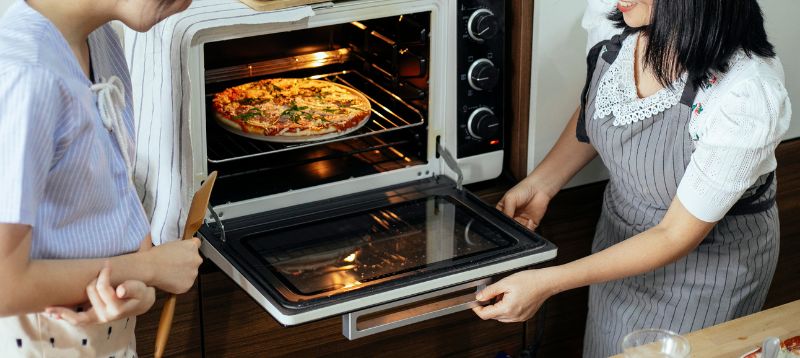
Preheating Your Oven
For a homemade pizza that has a crispy crust, preheating your oven is a non-negotiable step. Your oven should be at full temperature before the pizza goes in. Crank up the heat to the highest setting, which is typically between 450-500°F (230-260°C). Allow your oven to heat for at least 30 minutes, especially if using a pizza stone or baking stone, as they take longer to reach the right temperature.
Using a Pizza Stone or Baking Sheet
A pizza stone is ideal for simulating the environment of a pizza oven and giving you a crispy crust. Place the pizza stone in the oven during the preheating stage. If you don't have a pizza stone, use a heavy-duty baking sheet or a pizza pan. For sheet pan pizza or rectangular pizza, a high-quality rectangular baking sheet is best. You might also sprinkle cornmeal on the stone or parchment paper on the baking sheet to prevent sticking and add texture.
To transfer the pizza:
- Pizza peel: If you're using a stone or steel, sprinkle it with cornmeal, then use a pizza peel to slide your pizza onto the stone.
- Parchment paper: For baking sheets, place your shaped dough on parchment paper for easy handling and transfer.
Timing and Temperature
Once your oven is preheated and the pizza is prepared, it's time to bake. Slide the pizza onto the preheated stone or baking sheet. The high heat will help the dough to cook quickly and evenly, giving you that desirable crispy crust.
Here is what you need to consider:
- Cooking time: Typically, pizzas bake within 8-15 minutes depending on the oven temperature, thickness of the dough, and the number and moisture content of the toppings.
- Doneness: The pizza is done when the crust is golden-brown and the cheese has melted and bubbled with slight browning.
Monitor your pizza throughout the cooking process, as oven temperatures and cooking times may vary. Use these guidelines to make a homemade pizza with a perfectly crispy crust and deliciously cooked toppings.
Useful Tips for Homemade Pizza
Sauce and Topping Advice
Remember to keep the sauce simple. A no-cook red sauce made with high-quality canned tomatoes, a hint of garlic, salt, and a drizzle of olive oil can be exceptionally flavorful without overpowering your toppings.
For the toppings, balance is key. Opt for a moderate quantity of high-quality cheese and select a few toppings to avoid a soggy crust; this will ensure a well-cooked, delicious pizza.

Pizza Dough and Baking Tips
Crafting your dough is a foundational step in pizza making. Begin by mixing your dough in the morning or the night before for flavor development. Use bread flour for its higher protein content, which yields a chewier crust. When ready to bake, preheat your cooking surface — a pizza stone, cast iron skillet, or even a heavy-duty baking sheet — in a very hot oven (ideally above 475°F or 245°C). A hot surface is crucial as it mimics the conditions of a professional pizza oven, resulting in a crisp bottom crust.
Cookware Selecting
Selecting the right cookware is vital. A pizza stone or a heavy-duty baking sheet will help in achieving a crispy bottom. Preheat your oven to the highest temperature, typically between 450-500°F (232-260°C).
Do I need a pizza peel?
It's not essential, but a pizza peel makes transferring your pizza to the oven easier and safer, reducing the risk of burns or dough mishaps.
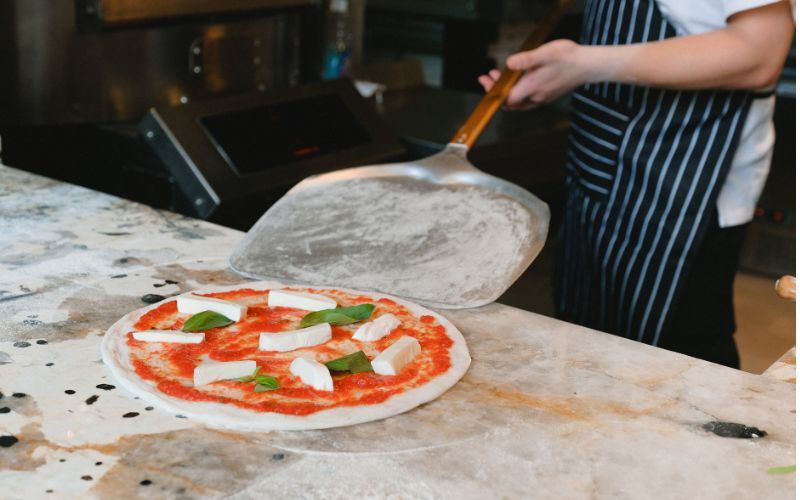
How to Care for Your Pizza Stone?
Keep your pizza stone clean by scraping off residual bits after each use. Avoid using soap which can leave a taste, and never expose it to rapid temperature changes to prevent cracking. For more guidance and details, please check how to care your pizza stone.

Pizza Freezing and Storage Tips
1. Fully bake pizza before freezing. Do not freeze uncooked dough or raw pizza.
2. Allow baked pizza to cool completely before freezing.
3. Wrap each slice individually in plastic wrap, removing as much air as possible. Then, wrap again or place in an airtight freezer bag or container.
4. Use freezer-safe materials like plastic wrap, foil, and bags specifically made for the freezer to prevent freezer burn.
5. Label frozen pizza with details like flavor, oven temp, and storage date for easy identification and use.
6. Store pizza flat in a single layer, not stacked.
7. Once frozen, pizza can typically last 1-2 months in the freezer before quality declines.
8. Thaw frozen pizza slowly in the fridge before reheating, or bake frozen pizza adjusting time for doneness.
So, in summary - bake first, cool, wrap tightly in plastic and foil, freeze flat for up to 2-3 months, and thaw slowly before use. Follow proper storage methods to maintain quality over time.

Recommended Recipes of Homemade Pizza
Types of Pizza Dough
There are various types of pizza dough, from thin crust to deep dish. Experiment with hydration levels and flour types (like all-purpose or bread flour) to discover what suits your taste profile.
Neapolitan
- Classic thin, chewy crust
- Made with flour, water, yeast, salt
- Long fermentation time (24+ hours)

New York Style
- Thin, crispy, chewy crust
- Higher protein bread flour
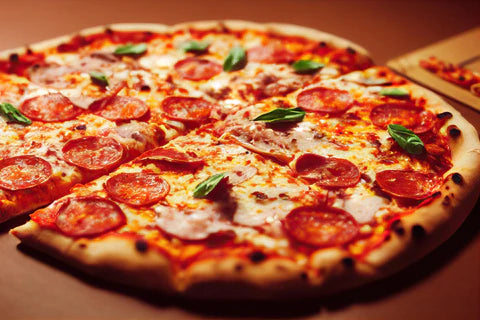
Sicilian
- Thick, chewy, crispy crust
- Pressed into a pan, almost like a casserole

Sourdough
- Tangy, complex flavor
- Uses a sourdough starter instead of yeast

Gluten-Free
- Uses gluten-free flours
- More fragile so it can't stretch too thin

Detroit Style
- Rectangular, airy, crispy crust with browned cheese edges

For a Neapolitan-style pizza, create a simple dough with high-gluten flour and use a wood-fired or propane brick pizza oven to cook at temperatures over 700°F(371°C).
Ingredients
- 2 cups '00' Pizza Flour
- 1/8 teaspoon instant yeast or active dry yeast
- 1/2 teaspoon granulated sugar
- 1 1/4 teaspoons salt
- 1/3 cup pizza sauce
- 3 ounces fresh mozzarella cheese (or about 3/4 cup shredded mozzarella)
- Fresh basil leaves
Instructions
- Combine the flour, yeast, sugar, and salt in a large bowl. Gradually add water, mixing until a dough forms.
- Knead the dough on a lightly floured surface until smooth and elastic.
- Place the dough in a greased bowl, cover, and let it rise in a warm place until doubled in size, about 2 hours.
- Preheat your oven to its highest setting, ideally around 700°F (371°C). If you have a pizza stone, place it in the oven while preheating.
- Divide the dough into balls and roll out each ball into a thin circle.
- Spread a thin layer of pizza sauce over the dough, leaving a small border for the crust.
- Slice the mozzarella into 1/4-inch thick pieces and distribute evenly over the sauce.
- Bake the pizza in the preheated oven for about 8-12 minutes, or until the crust is golden and the cheese is bubbly and slightly browned.
- Remove from the oven and top with fresh basil leaves. Slice and serve immediately.
Frequently Asked Questions
How long does it take to cook Homemade Pizza
Cooking time for your homemade pizza typically ranges from 8 to 15 minutes. The exact time varies depending on the crust's thickness and pizza size. For a thin crust, aim for the shorter end of the range, while a thick crust will require more time for even cooking.
- Thin Crust: 8-10 minutes
- Medium Crust: 10-15 minutes
What is the ideal temperature for baking a pizza in a conventional oven?
Your conventional oven should be preheated to the highest heat, typically between 450°F (232°C) and 500°F (260°C), for a standard pizza. This high heat mimics the conditions of a traditional pizza oven and helps to achieve a crisp crust and well-cooked toppings.
Can pizza be cooked effectively in an oven without a pizza stone, and if so, how?
Yes, you can cook pizza without a stone. Preheat a baking sheet in the oven as it warms up and then slide the pizza onto the hot sheet. Alternatively, for a softer crust, you can simply place the pizza on a baking tray and cook it at high heat.
What are the time and temperature guidelines for cooking a frozen pizza in an oven?
Cooking time and temperature for a frozen pizza can vary, usually requiring a lower heat of about 425°F (218°C). Instructions typically suggest baking for 12-22 minutes. Always refer to the specific instructions on the pizza's packaging for best results.


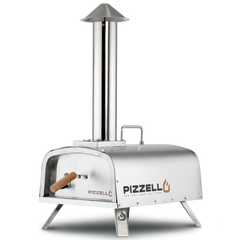
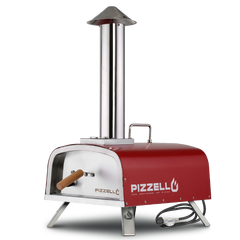
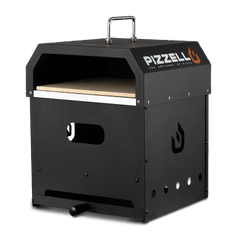
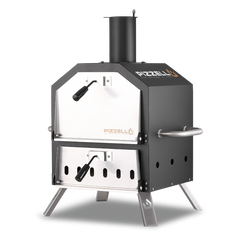
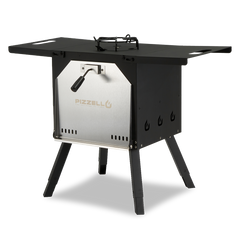



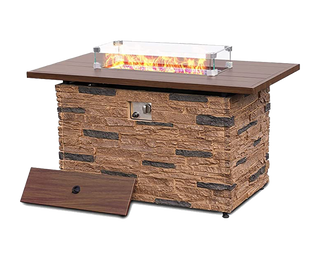
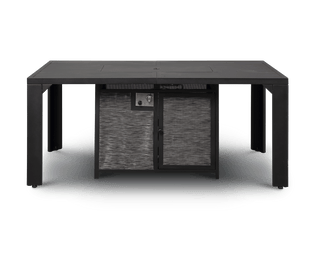
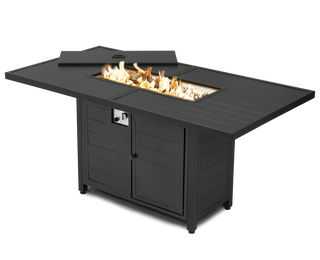

 Dining Table
Dining Table
 Cart
Cart
 Cart Pro
Cart Pro
 Pizza Stone
Pizza Stone
 Gas Burner
Gas Burner
 Pizza Peel
Pizza Peel
 Dining Chairs
Dining Chairs
 Wind Guard
Wind Guard
 Fire Glass Bead
Fire Glass Bead
 Waterproof Cover
Waterproof Cover















